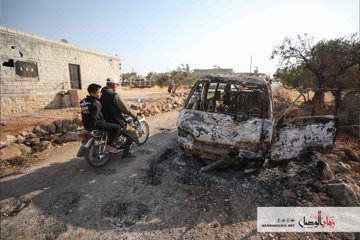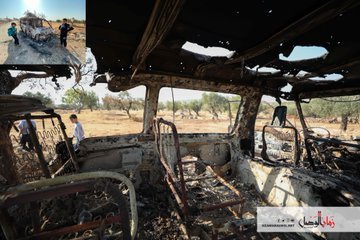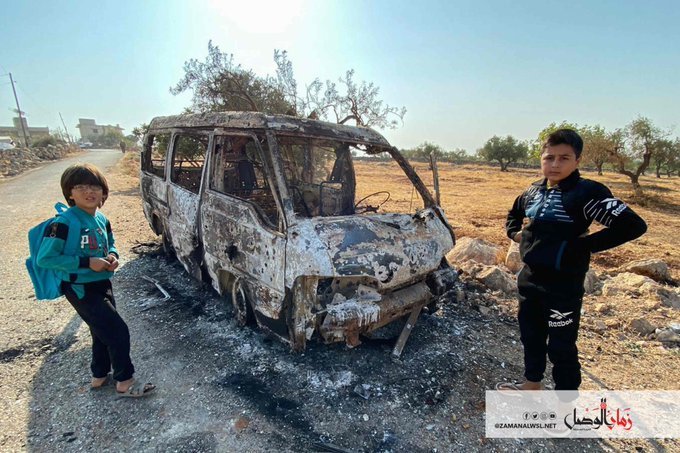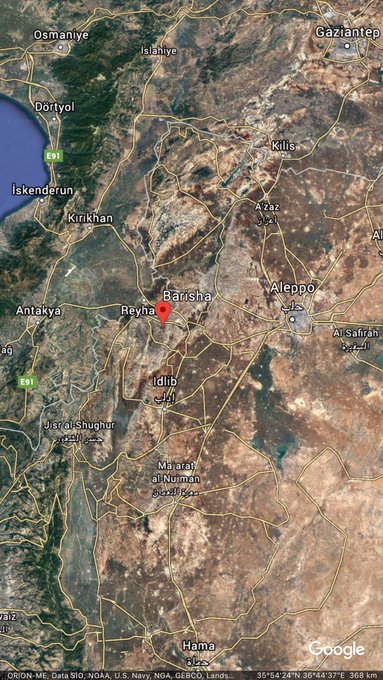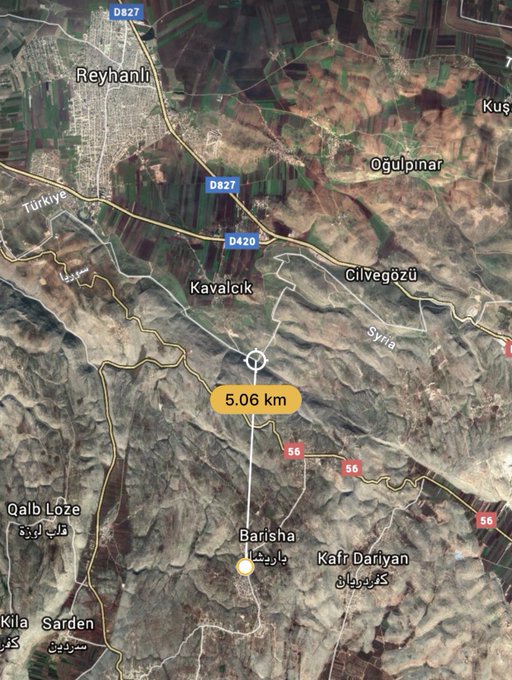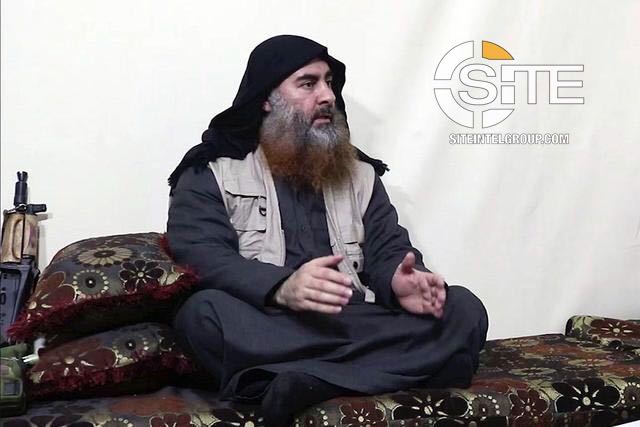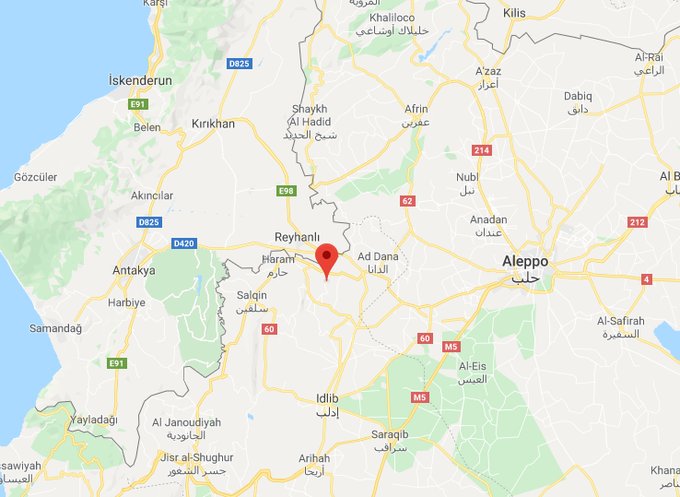
Abu Bakr al-Baghdadi, the ISIS leader sometimes called the “invisible sheikh” or “the Believer,” was born in Samarra, Iraq into a deeply religious family. President Donald Trump has confirmed that al-Baghdadi died on October 26, 2019 while a U.S. mission unfolded against him.
Baghdadi was married at least three times, and two of his wives followed him into death, according to Newsweek, which broke the story that the ISIS leader may have been killed in the U.S. raid. The president said the two wives were wearing suicide vests that didn’t detonate and three children were also killed in the U.S. raid. Trump said al-Baghdadi killed himself and the three children by detonating a suicide vest.
“Last night, the United States brought the world’s number one terrorist leader to justice,” Trump said. “Abu Bakr al-Baghdadi is dead.” He ran into a tunnel when he blew himself up with the family members.
The leader of the Islamic State, otherwise known as ISIS, earned the “Believer” nickname because he was considered extremely pious, even in childhood, according to Brookings.edu.
Authorities have not yet confirmed the accounts of al-Baghdadi’s death, but President Donald Trump tweeted, “Something very big has just happened!” and scheduled a 9 a.m. October 27, 2019 news conference.
Al-Baghdadi served as ISIS’s caliph – which the site says is Arabic for “successor” – since June 2014, CounterExtremism reports. However, CNN reports that Al-Baghdadi became leader of the “Islamic State of Iraq (ISI)” in 2010. Three years later, ISI became ISIS when it merged with another militant group tied to al-Qaeda, the Cable News Network reported.
Here’s what you need to know:
1. Abu Bakr al-Baghdadi Was Born in Iraq Into a Lower Middle Class Sunni Muslim Family
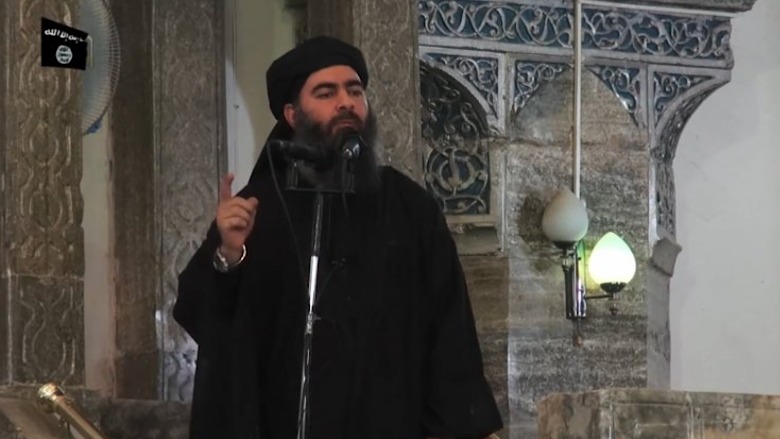
Militant videoAbu Bakr al-Baghdadi
Abu Bakr al-Baghdadi was born “Ibrahim Awwad Ibrahim al-Badri” in 1971 in Samarra, Iraq, according to CounterExtremism.com and the UN.
BBC reports that al-Baghdadi was born “to a lower-middle class Sunni family” known for its “piety” and claims of “descent from the Prophet Muhammad.” NBC reported, though, that much of Baghdadi’s childhood stories are considered possibly myth, especially the latter.
Growing up, he was known for passionately reciting the Koran and “was meticulous in his observance of religious law,” according to BBC. He would sometimes chastise family members who didn’t adhere to religious doctrine.
When he became leader of ISIS, all of his religious studies came together. “In assuming the title, Baghdadi declared himself the religious, political, and military leader of all Muslims,” the CounterExtremism site reports.
2. Al-Baghdadi’s Father Taught at a Mosque, as Did He

Militant propoganda videoAbu Bakr al-Baghdadi
The extremely detailed profile by Brookings.edu, written by William McCants, says that Baghdadi’s father was named Awwad.
He was religiously active in his community, teaching at a local mosque, where Baghdadi would also lead children in “chanting the Quran” as a teenager, according to the profile, which added that he spent many hours doing this.
The site also reported that some of Baghdadi’s family went in a different direction, joining the Baath Party, described as “a socialist organization dedicated to the goal of pan-Arab union.”
Brookings.edu further described al-Baghdadi in this era as “the son of a pious man who taught Quranic recitation in a local mosque.” Al-Baghdadi was “withdrawn, taciturn, and, when he spoke, barely audible,” the site reported. The site describes how he would admonish family members if they didn’t adhere to religious teachings. He spent his childhood at school or a mosque, fervently engaged in the study of religion.
3. Al-Baghdadi Had His Own Family by the Time He Went to University
According to BBC, al-Baghdadi has multiple college degrees in Islamic and Koranic studies. They are a bachelor’s degree from the University of Baghdad in 1996 and a Master’s in 1999 and PhD in 2007 from Iraq’s Saddam University.
During graduate school he lived in the Tobchi neighborhood of Baghdad, BBC reported, where he taught “Koranic recitation” to children at a neighborhood mosque and played football. It was when he was in college that he joined the Muslim Brotherhood at the urging of an uncle, and “embraced Salafist jihadism,” according to BBC.
Al Monitor reports that Baghdadi had his own family by the time he was studying at university. “He wasn’t alone, he had a family with him. The guy seemed very normal, and yes I do remember him very well,” a man who knew him told Al Monitor, which added that al-Baghdadi had “sons, daughters, brothers and wife.”
Another man told the site that Baghdadi lived a normal life then: “Sheikh Ibrahim [Baghdadi] was someone very normal, someone like you. He didn’t have any complexities in his life, and we used to play football [soccer] here,” as he pointed to an empty piece of land next to the mosque. “He was obsessed with scoring goals; he would become nervous if he didn’t.” Amjad added, “When the US invaded Iraq he decided to take up arms and fight — he changed a lot after that.”
According to CounterExtremism, al-Baghdadi has tried very hard to keep his identity under wraps. Before ISIS became a force in 2014, the site reports, only two photos of Baghdadi were known to exist, and he was often masked after that.
This earned him the moniker “invisible sheikh.”
In 2014, though, he did give a speech from the pulpit of Mosul’s Great Mosque, the site reports.
According to NBC News, he was once held in a U.S. Detention Camp called Camp Bucca in Iraq, where he was remembered as “savvy.” The television network reported that he was “active in Fallujah in the early 2000s,” commanding only up to 100 fighters, and was detained in 2005. Four years later, he was turned over to Iraqi officials and commented, “I’ll see you guys in New York,” NBC reported. It’s believed that the United States’ invasion of Iraq radicalized him.
4. Baghdadi Had at Least Three Wives & Seven Children; One of His Purported Wives Described Him as an ‘Ideal Father’
As of 2015, the Al Monitor article reported that “Baghdadi is married to two women who gave birth to his six children.” Since that article CNN reported on a third wife and seventh child.
His first wife is named Asma Fawzi Mohammed al-Kubeisi and she is his first cousin, the site reports, adding that the militant leader had these children with her: Huzaifa, Omaima, Yaman, Hasan and Fatima.
Baghdadi also has a second wife named Israa Rajab Mahal al-Qaisi, the site reported, and she is the mother of son Ali. It’s not clear whether the wives were living with him, however.
According to CNN, Saja al-Dulaimi told Sweden’s Expressen TV that she was also married to Abu Bakr al-Baghdadi and had a daughter with him. “I married a normal person, a university lecturer,” she said of the 2008 union. “He was a family man.”
She added that he already had another wife then and stated, “He went to work and came home to his family. He was great. He was the children’s ideal father. The way he was with children … he was a teacher — you know how teachers are. He knew how to deal with children, better than how to deal with the mother.”
5. Baghdadi Has Three Brothers Who Don’t All Agree With His Views
According to Al Monitor, Baghdadi also has three brothers named Shamsi, Jomaa and Ahmad.
The site reported that the Shamsi and Baghdadi had “serious differences,” but Shamsi was still detained by the U.S. for a time. Jomaa was described as an “extremist” like his brother, as well as a close aide and bodyguard.
The third brother was known to have financial problems, Al Monitor reported.
The book, Under the Black Flag: An Exclusive Insight Into the Inner Workings of ISIS, by Sami Moubayed, says that Baghdadi’s brothers included Shamsi, the eldest, who was jailed in Iraq over financial affairs and embezzlement.
“He is not a Salafi and is critical of his brother’s career path,” the book says, adding that the middle brother, Jumaa “is a fervent jihadi and currently serves as his younger brother’s private bodyguard.”
The three studied “at state-run high schools in Samarra.”
When Baghdadi was nine, many family members fought in the Iran-Iraq War, with some giving their lives. He moved to Baghdad with his family in 2989 the book says, renting a small apartment in the al-Tobaji middle class neighborhood.
His mother was a “woman from the Bodari tribe to whom the young al-Baghdadi was greatly attached, the book says. He carried a photo of her always.
Although the family argues it’s directly descended from the Prophet Muhammad through his elder grandson Imam al-Hasan, some clerics dispute the family’s claims.
Newsweek was first to break the unconfirmed news that al-Baghdadi might be dead. The magazine reported on the evening of October 26, 2019 that the United States military “has conducted a special operations raid targeting one of its most high-value targets, Abu Bakr al-Baghdadi.”
According to Newsweek, President Trump approved the mission a week before. Newsweek reported that al-Baghdadi was dead. James LaPorta, a Newsweek staff writer, wrote on Twitter, “A reminder @Newsweek is still publishing great stories, like the scoop we published tonight about U.S. Special Operation troops killing Abu Bakr al-Baghdadi during a raid in Syria’s northwestern Idlib province.”
Katie Bo Williams, a journalist with Defense One, tweeted that “Baghdadi is believed to have detonated his suicide vest, killing himself.”
ABC’s James Gordon Meek then tweeted, “Abu Bakr al-Baghdadi is believed to have detonated a suicide vest he was wearing when the US special mission unit carried out the ground raid in Idlib on Saturday, according to a counterterrorism official. Afterward, the building was leveled by the US operators.”
ABC’s Luis Martinez added these details: “BREAKING From @MarthaRaddatz @LMartinezABC @abc — Two US officials confirm that US Special Operations Forces conducted a raid in Syria on Saturday targeting Abu Bakr al-Baghdadi, the head of ISIS. He is believed to be dead, said the officials. Biometric confirmation underway.”
For years, Al-Baghdadi has been characterized as an isolated figure on the run.
“U.S. and Iraqi defense officials, in their most expansive comments to date on al-Baghdadi’s fate, described an isolated commander hiding in the desert and focused largely on his own survival, a sharp contrast to the charismatic jihadi preacher who barely more than a year ago ruled a ‘caliphate’ that stretched from central Syria to the outskirts of Baghdad,” reported The Washington Times in March 2017.
According to CNN, the terrorist leader was “in hiding for the last five years.” In April 2019, a video published by ISIS showed a man who may have been Baghdadi. Before that, he was last seen publicly in 2014.
Al-Baghdadi’s death would be a big deal to Coalition forces; he’s one of the world’s most wanted men with a multi-million dollar bounty on his head.
READ NEXT: The Death of Abu Bakr al-Baghdadi.
